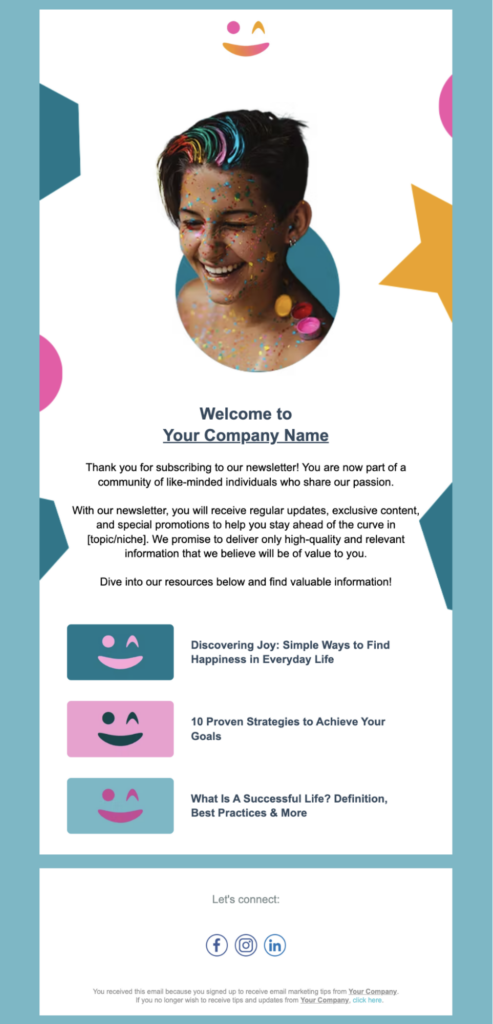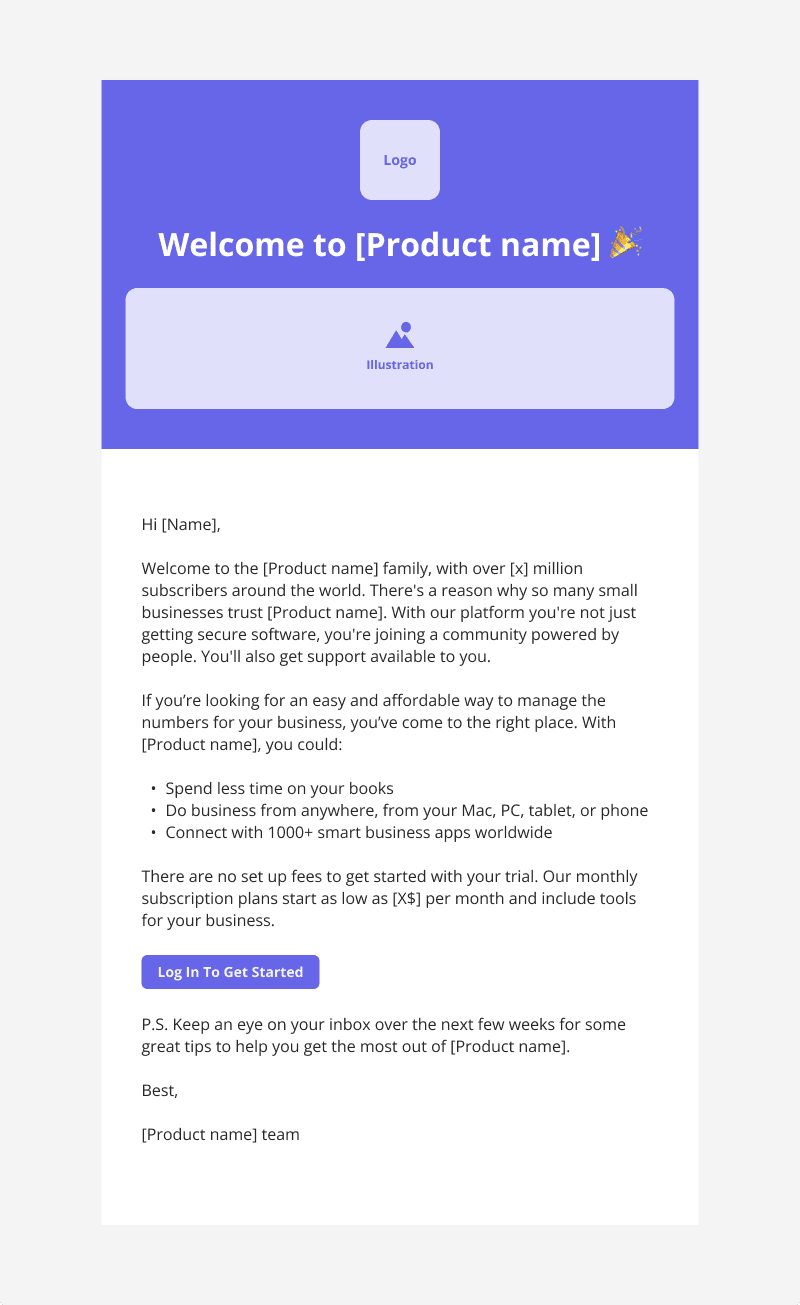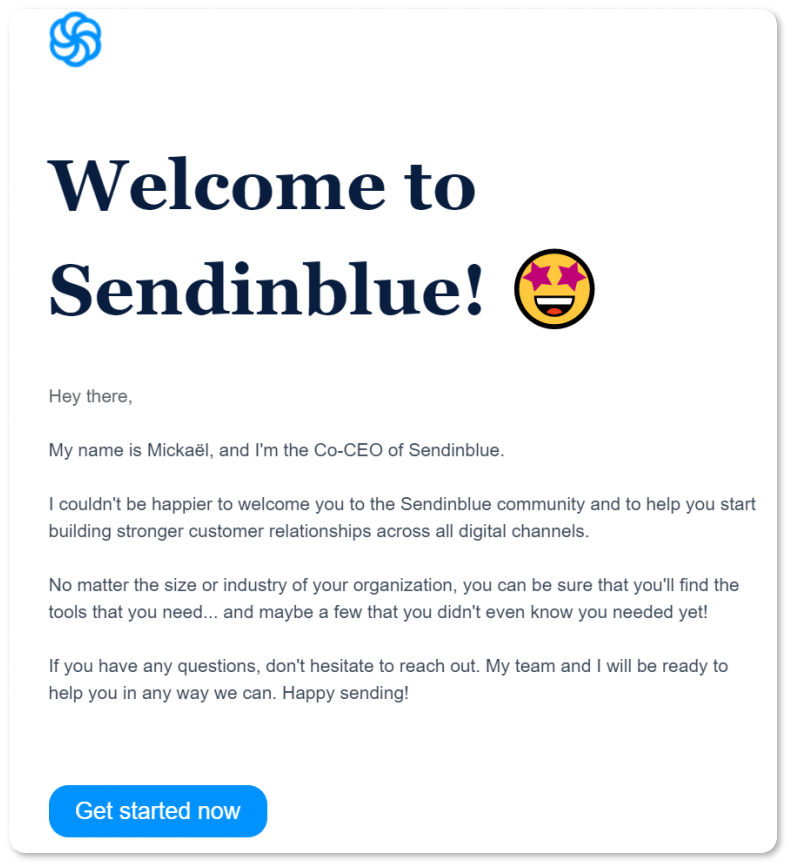Your welcome email is the first real chance to connect with your audience. It sets the tone for every message you send after.
But are you making the most of this powerful tool? A great welcome email can grab attention, build trust, and encourage your readers to take action—all within seconds. If you want to turn new subscribers into loyal fans, understanding how to craft the perfect welcome email is key.
Keep reading to discover simple tips that will make your welcome emails impossible to ignore.

Credit: moosend.com
Importance Of Welcome Emails
Welcome emails are the first step in building a strong relationship with new subscribers. They create a chance to greet and guide users right after they sign up. A well-crafted welcome email helps brands stand out and encourages users to engage more.
These emails set expectations and make users feel valued. Ignoring this step can lead to lost opportunities and lower engagement. Welcome emails are crucial for turning new sign-ups into loyal customers.
First Impressions Matter
Welcome emails form the first impression of your brand. They show professionalism and care. A clear, friendly message makes users feel welcomed and important. A poor or missing welcome email can cause users to forget your brand quickly.
Setting The Tone For Engagement
This email sets the tone for future communication. It introduces your style and voice. Users learn what to expect from your emails. A positive tone encourages users to open and read more messages.
Impact On Customer Retention
Welcome emails increase the chance users stay connected. They build trust from the start. Engaged users return more often and buy more. A strong welcome email can reduce unsubscribe rates and improve loyalty.

Credit: userpilot.com
Elements Of Irresistible Messages
Welcome emails set the tone for your relationship with new subscribers. Crafting irresistible messages helps grab attention and builds trust from the start. These messages must be clear, friendly, and action-driven. Each element plays a key role in making your welcome email effective and engaging.
Compelling Subject Lines
The subject line is the first thing readers see. It must spark curiosity or promise value. Keep it short and direct. Use words that invite readers to open the email immediately. Avoid complicated phrases or long sentences. A simple, clear subject line increases your open rates.
Personalized Greetings
Addressing your subscriber by name makes the message feel special. Personal greetings create a warm connection. It shows you care about the individual, not just the email list. Use the subscriber’s first name or other details you have. This small touch boosts reader engagement and trust.
Clear And Concise Content
Keep the message easy to read and straight to the point. Avoid long paragraphs or complex words. Use short sentences that explain who you are and what to expect. Highlight the benefits of staying subscribed. Clear content helps readers understand your message quickly.
Strong Call-to-action
Guide your readers on what to do next. Use a clear, simple call-to-action (CTA) that stands out. Examples include ”Shop Now,” ”Learn More,” or ”Get Started.” The CTA button or link should be easy to find and click. A strong CTA drives engagement and encourages immediate response.
Design Tips For Welcome Emails
Designing a welcome email is key to making a strong first impression. The email must look good and work well on any device. Clear design helps readers understand your message fast. A well-designed welcome email builds trust and starts a good relationship.
Mobile-friendly Layouts
Most people read emails on phones. A mobile-friendly layout fits small screens perfectly. Use single-column designs with large buttons. Text should be easy to read without zooming. Avoid tiny fonts and crowded elements. Test your email on different devices before sending.
Visual Appeal And Branding
Good visuals catch the eye and keep readers interested. Use your brand colors and fonts to stay consistent. Keep the style simple and clean. Too many colors or fonts can confuse readers. The welcome email should feel like your website or store.
Use Of Images And Videos
Images can explain your message better than words alone. Use clear and relevant pictures that match your text. Videos add a personal touch and explain your offer well. Keep videos short and easy to play. Make sure images load fast and do not slow down the email.
Timing And Frequency Strategies
Timing and frequency play a big role in welcome emails. Sending the right message at the right time helps keep new subscribers interested. It also builds trust and sets the tone for future emails.
Finding the best moment to send your welcome email can increase open rates. Sending too many emails can annoy readers. Sending too few can lose their attention. A clear plan helps balance these needs.
Optimal Send Times
Send welcome emails within minutes or hours after sign-up. This keeps the connection fresh and shows quick response. Early morning or late morning often works well. Many people check email during these times. Avoid late nights or weekends when people ignore emails.
Follow-up Email Sequences
Use a series of follow-up emails after the welcome message. Space them out by a few days to keep interest. Each email can share helpful tips, offers, or company values. This builds a relationship step by step. Avoid sending all information in one email.
Avoiding Overwhelm
Too many emails can feel like spam. Send only what is needed to keep readers engaged. Watch how subscribers react and adjust frequency if needed. Give options to unsubscribe or change email preferences. Respecting readers’ limits creates trust and loyalty.
Measuring Email Engagement
Measuring email engagement helps you see how your welcome emails perform. It shows how readers interact with your messages. Tracking engagement helps improve future emails. It guides you to create content your audience likes.
Key Metrics To Track
Open rate shows how many people open your email. Click-through rate tells how many click links inside. Bounce rate means emails that fail to deliver. Unsubscribe rate shows how many leave your list. These metrics reveal your email’s success and areas to fix.
A/b Testing Techniques
Test different subject lines to find which grabs attention. Try various call-to-action buttons to see what works best. Change email designs to check what looks better. Send two versions to small groups and compare results. Use this data to choose the best email format.
Improving Based On Feedback
Ask readers for their opinions about your emails. Use surveys or simple questions in your messages. Read replies carefully to find common issues. Fix problems to make emails clearer and more useful. Regular updates keep your audience interested and engaged.
Common Mistakes To Avoid
Welcome emails set the tone for new subscribers. Avoid mistakes that can turn readers away early. A clean, clear message works best. Focus on what the reader needs. Keep the email simple and friendly. Here are common errors to avoid in welcome emails.
Overloading Information
Too much content can confuse or bore readers. Avoid long paragraphs and many links. Highlight key points only. Give readers time to explore your message. Save extra details for later emails.
Ignoring Mobile Users
Most people check emails on their phones. Emails that don’t fit small screens frustrate users. Use a responsive design that adapts to any device. Keep buttons easy to tap. Test your email on phones before sending.
Lack Of Personalization
Generic emails feel cold and uninviting. Use the subscriber’s name to create connection. Tailor content based on their interests or sign-up source. Show that you value each reader. Personal touches increase trust and engagement.

Credit: snov.io
Frequently Asked Questions
What Is A Welcome Email?
A welcome email is the first message sent to new subscribers or customers. It introduces your brand and sets expectations. This email builds trust and encourages engagement. It’s key for a positive first impression and higher retention rates.
Why Are Welcome Emails Important?
Welcome emails increase subscriber engagement and brand loyalty. They have higher open rates than other emails. This email helps establish communication and encourages users to explore your products or services. It also reduces churn and boosts long-term customer value.
What Should A Welcome Email Include?
A welcome email should include a friendly greeting, brand introduction, and clear call-to-action. Adding contact info and social links enhances trust. Personalizing the message improves relevance. Offering incentives like discounts can boost conversions.
When Should You Send A Welcome Email?
Send a welcome email immediately after signup or purchase. Timely delivery maximizes engagement and relevance. Delayed emails risk losing interest. Instant responses show professionalism and care for your audience.
Conclusion
A welcome email helps start a strong connection with new subscribers. It shows you care and sets clear expectations. Keep your message friendly, simple, and useful. A good welcome email invites readers to explore more. It builds trust and encourages action.
Don’t forget to personalize it for better results. Small details make a big difference in how people feel. Sending a thoughtful welcome email is the first step to a lasting relationship. Try to make it warm and easy to read.
That way, your audience will stay interested and engaged.

